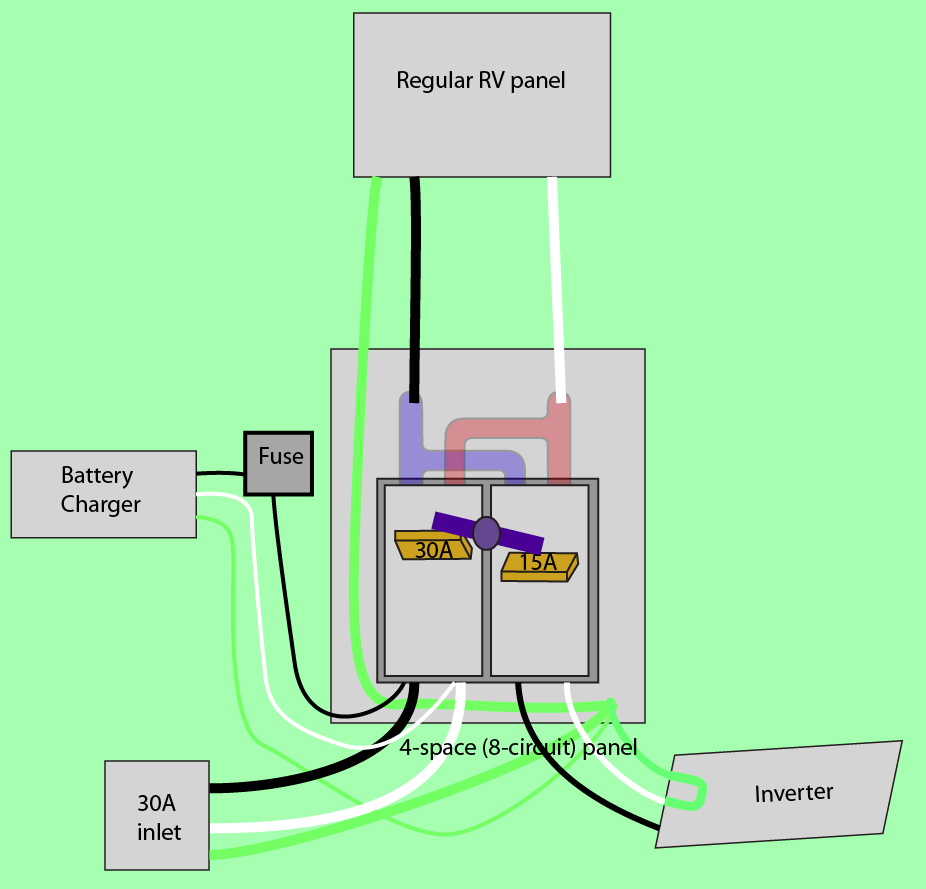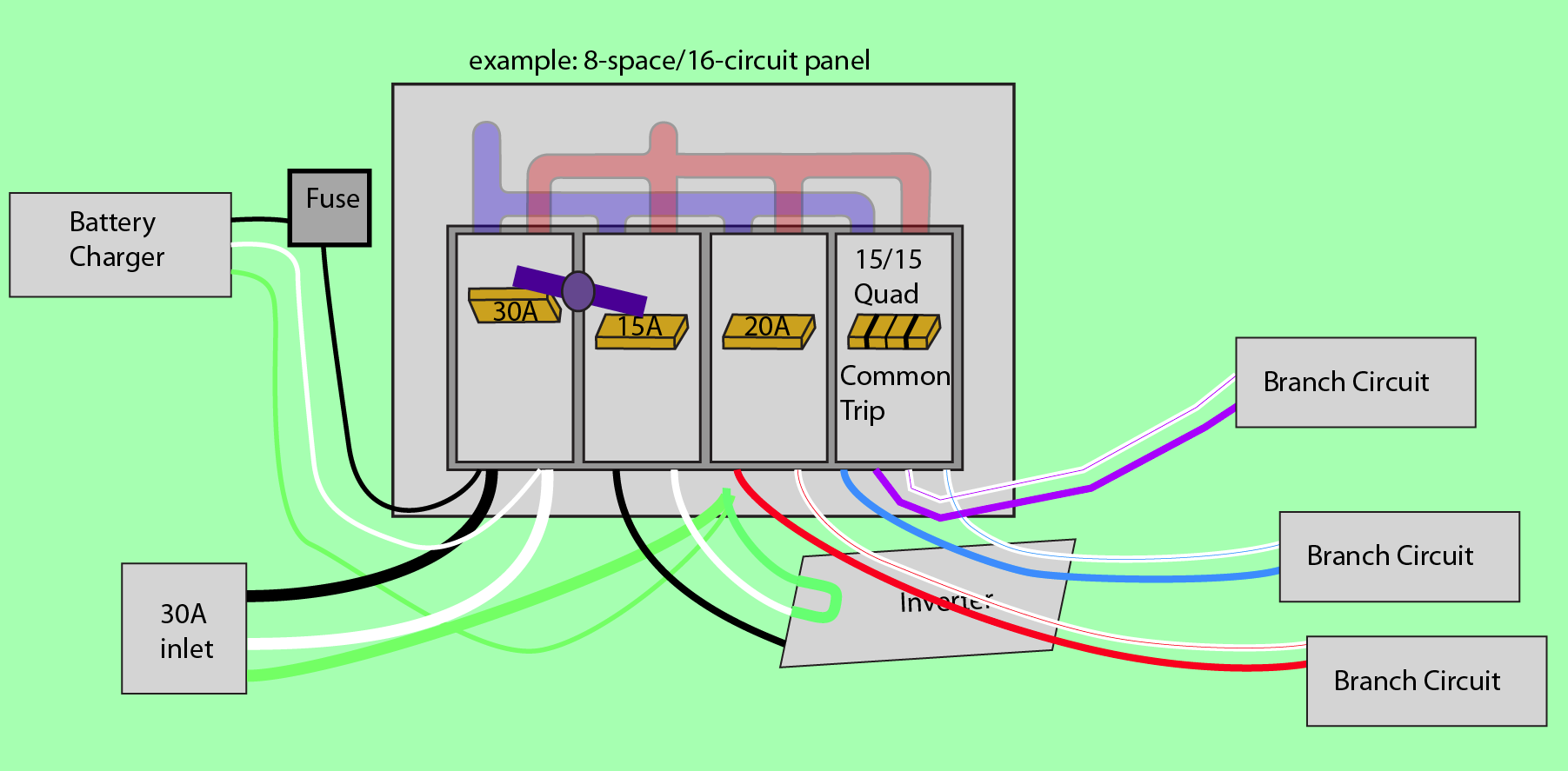There's an easier and more passive way to do that thing. And it won't have any vampire draw on the battery.
Note that as an RV, you must comply with your territory's electrical code, such as NEC in the US and central America. This is AC power. There's no "wing-dinging" this together with non-listed components from Mouser or worse, Amazon.
Fortunately, there'll be no trouble putting this together with approved AC power equipment.
What you need is a stock thing: an interlock.
This sits in an AC breaker panel and interlocks 2 breakers so they can't be on at once. Such as an Eaton CHML, Square D QO2DTI or Siemens ECSBPK02.
I recommend using an additional 4-space service panel/load center. This will use common off-the-shelf 2-pole breakers and interlock to switch both hot and neutral to your RV's regular service panel. This way, when on utility, the inverter's neutral-ground bond is disconnected from the house.
This will do something else cool for us: allow us to run the battery charger while on inverter, as long as utility power is present. That means you don't need to think about turning it on. It just does.
How to build it.
Use a 4-space/8-circuit micro-panel. Into it go two 2-pole breakers: one of them 30A (for the utility side) and the other is probably 15A (or whatever is appropriate for the inverter). Between the two breakers goes a "rocking interlock" that prevents both breakers from being on at once.
The breakers are "back-fed" (fed from the output side) to the common bus on the panel. That is then sent onward to the RV's existing AC panel.
Why do you need an interlock?
At the very least, the interlock is to keep your inverter from inadvertently backfeeding the power grid, if you bungled a switchover during an outage. Backfeeding can kill linemen repairing the lines.
But another big problem is neutral switching. It needs to be done. On utility, you have neutral and ground separated. On inverter, the inverter bonds neutral and ground, and this isn't disconnected by a normal switch. So the RV is bonding neutral and ground from the house.
The problem is, external failures (in the house) could cause loads outside the RV to path their return current via your RV (inverter's) neutral-ground bond. This can be far more amps that it was ever designed for. This is why we only bond neutral and ground in one place.
Doing it all with 1 panel
Since this is a 120V-only RV, you could actually make it happen in a single panel, by putting the branch circuits in the same panel as the interlock. However, since the panel is using its 2-pole functionality to switch neutral, all the branch circuit breakers will need to be 2-pole also - so they can tap neutral. This will gobble up breaker spaces at twice the rate.
Fortunately on these compact panels, you can usually use tandem (or in this case quadplex breakers). I would avoid small GE panels here*.
The switched neutral also makes GFCI and AFCI breakers out of the question, but you can always put them at the first receptacle.
8 spaces for clarity. Pick any panel size you want. Grounds omitted for clarity. Note how every circuit taps neutral. Also note "outer/inner" way you tap a quadplex. Not illustrated: outer handle-ties on the quadplex.
Branch circuit wire colors for clarity; feel free to use black/white.
As long as you wire your grounds, and have 1 (temporary?) receptacle on each circuit, you can use a common 3-light tester to make sure you didn't accidentally exchange hot and neutral on the breaker.
All the breakers must be common-trip. Why? Because you can't abide a situation where neutral trips, but hot does not trip. The circuit would be inoperative, and seem dead, but would be live.
* unless you're very clear on how GE's double-stuff (thin/narrow) 2-pole breakers work - they're not like quads at all, and not like quads). With small panels, you'll find you can't support as many 2-pole breakers as you thought you could!


